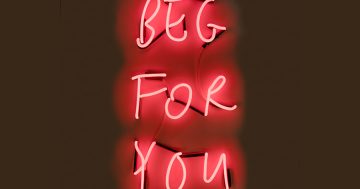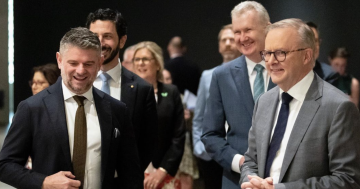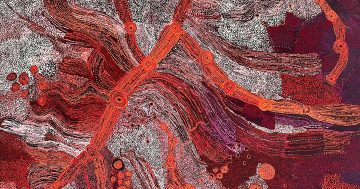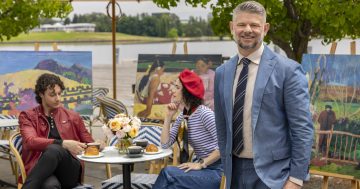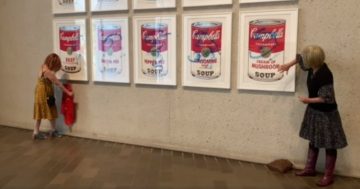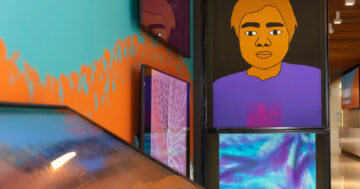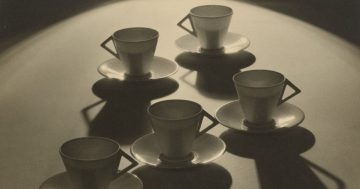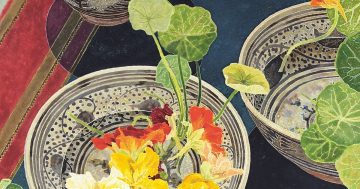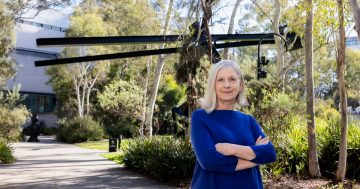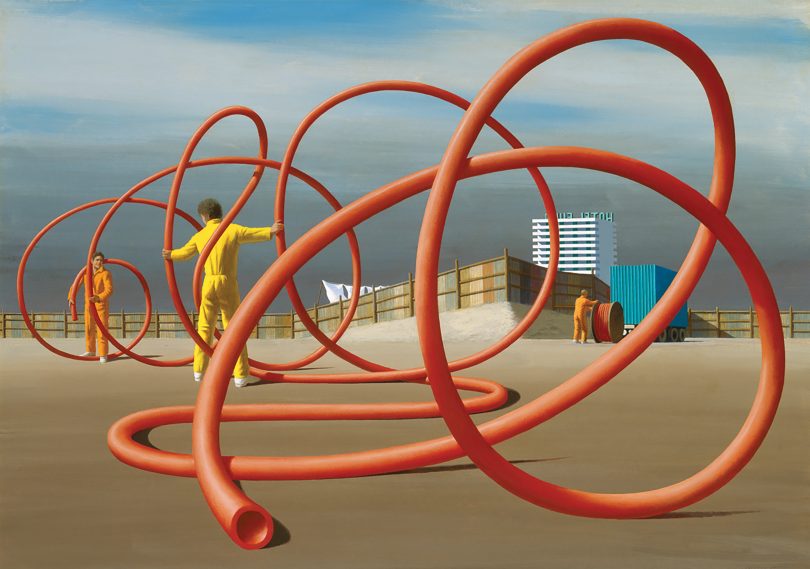
The Plastic Tube by Jeffrey Smart. Image: National Gallery of Australia.
The “uncanny, strange and beautiful worlds” of Jeffrey Smart are lighting up the National Gallery of Australia (NGA) in a summer season show that marks the centenary of one of Australia’s most important 20th-century painters.
Nominated as one of the city’s must-see summer experiences by Visit Canberra, the exhibition is open until May and brings together 130 works by the painter.
“He could find things in the most unexpected places,” says curator and Head of Australian Art, Deborah Hart, standing in front of two works where spirals tumble and unspool across the landscape.
“His house in Italy didn’t have plumbing or electricity, and they discovered up at the back that some pipes had calcified. So off he went to the equivalent of Bunnings to get plastic tubing. As it unrolled, this magic, beautiful image emerged.
“You see the mundane and the metaphysical come together. He is an incredibly inventive, diverse artist.”
There are 130 works from more than 50 private and public collections in the exhibition, spanning 70 years of endeavour, arranged around themes and places in Smart’s life. It’s not a retrospective as such, but Deborah Hart says paintings that haven’t been hung together for decades are re-acquainted and that each work counts towards the bigger picture.
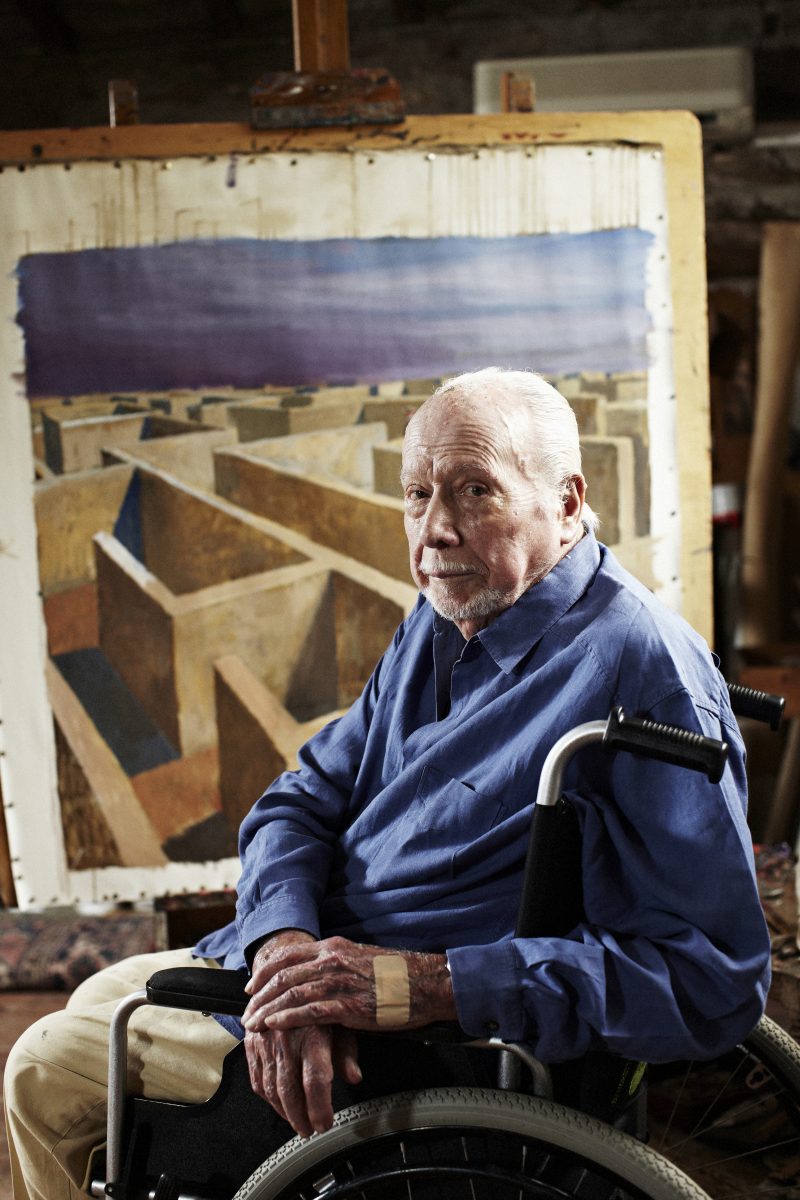
Jeffrey Smart painting Labyrinth. Photo: National Gallery of Australia.
Smart was always an urbanist. As a Depression-era child in Adelaide, he moved to the city centre with his parents and never wanted to leave. Much of his later life was spent in a beautiful Tuscan house with his partner of 40 years, Ermes de Zaan, but in between, there was plenty of uncertainty as Smart struggled to gain critical acclaim for work that went against the modernist grain, neither realist nor abstract.
And don’t look for obvious meanings in these paintings either. Smart himself hated being asked to explain them, and Hart says that “he was setting stage sets, making theatre out of art and inviting us to bring our own stories”.
The exhibition shows a combination of crystal clear light and sharp edges, the painter’s beloved geometry and an overwhelming sense of the strange. Smart has often been accused of coldness, but there’s also plenty of quiet humour and warmth.
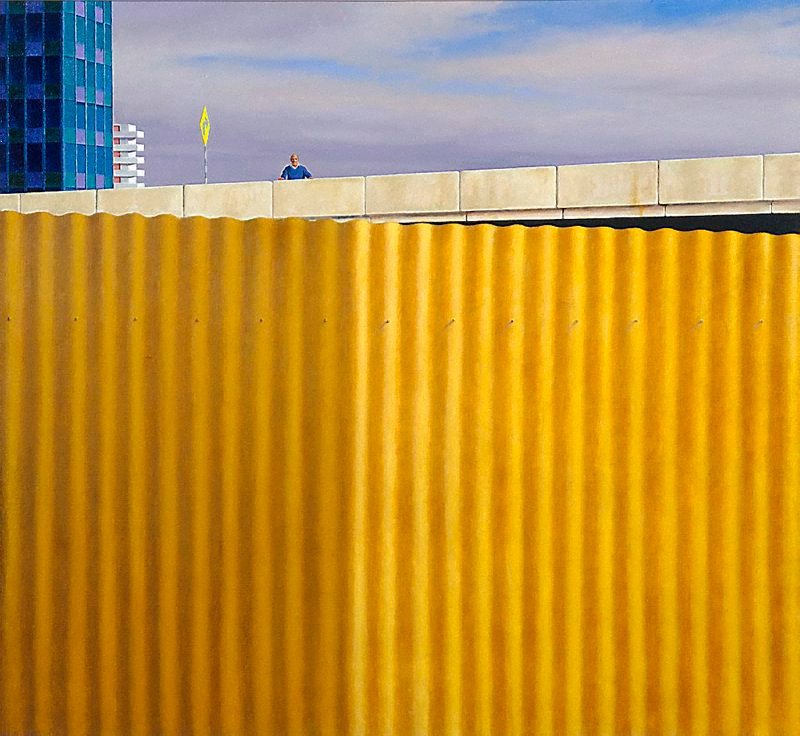
Portrait of Clive James. Image: Art Gallery of NSW.
His portrait of Clive James, the raconteur and author, is a case in point.
A giant rippling wall of bright yellow corrugated iron takes up fully three quarters of the work and James – renowned for his ego as well as his wit – appears as a tiny, barely recognisable figure perched on top of it.
“He found his milieu in the urban environment, in buildings and railway tracks, in unlikely mundane locations. He saw great beauty in the urban world. ‘I love living into the 20th century. I want to paint it as beautifully as I can’, he said.
“It’s strange to think of a railway track or lamp post as beautiful, but people will see them afresh after this exhibition,” Deborah Hart says.
The NGA’s predecessor, the National Art Collection, purchased On the Roof from Smart in 1959, before the Gallery was built. Smart’s last painting, The Labyrinth, is also from the national collection and forms the exhibition’s full stop in the final room.
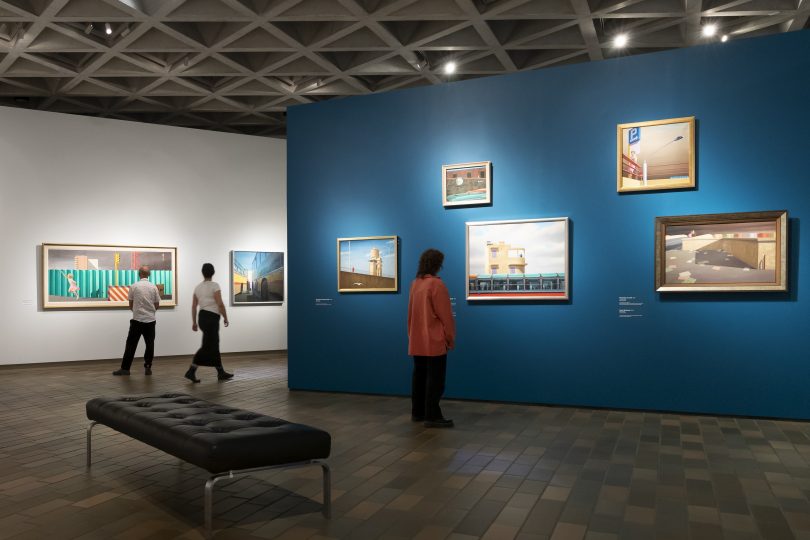
Jeffrey Smart exhibition. Photo: National Gallery of Australia.
In between, Sharp’s precisely painted, masterfully composed works fan out, encompassing his post-Cold War interest in new technologies and surveillance, the detritus of the industrial world and the warmth of his relationships with the likes of Margaret Olley and Germaine Greer.
Longtime friend David Malouf was surprised to find himself portrayed in a boiler suit and a very unlikely pair of shoes, apparently siphoning petrol from a ground tank.
As a student, Smart was taught by key Cubist Dorrit Black and was always aware of abstraction in his compositions, even when they appear completely figurative.
“Nothing is left to chance in these paintings,” NGA director Nick Mitzevitch says. “The picture plane is filled by everything that’s required. Jeffrey didn’t waste time on his paintings”.
Jeffrey Smart is at the National Gallery of Australia until 15 May 2022. Book tickets at nga.gov.au.










